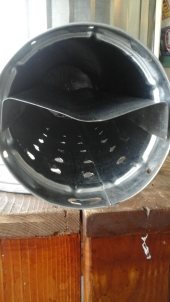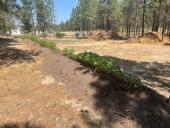




Permaculturist, Herbalist, Acupuncturist
 1
1




 3
3












Miles Flansburg wrote:That was awesome John !










Permaculturist, Herbalist, Acupuncturist
 2
2




Conner Patrick wrote:
My current ponderment is this: Are there known uses for the different sizes of sticks? I'm thinking about grouping sticks from trees as as small - twig, medium - branch, and LOG. Small sticks, twigs, could easily be used to plant vertically where plant roots are expected to grow down. I doubt it takes a medium sized stick, a branch, to trail a taproot for a plant. It probably only takes a stick the width of any of the roots, even the taproot, which would only be for the largest of the twig category. I'm using branches (medium) for borders to raise beds as part of hugel-concept. Logs, the largest "sticks", could be saved for the INSIDE of hugelbeds. That's how I'm going to try and do this... anyway. Any suggestions? I'm hoarding sticks and trees in my immediate area (with landowners permission, lol).











Permaculturist, Herbalist, Acupuncturist
 1
1




 1
1




Vic Johanson
"I must Create a System, or be enslaved by another Man's"--William Blake




Permaculturist, Herbalist, Acupuncturist
 1
1




Conner Patrick wrote:I see value in trying to get the sticks "right"... of course, as has been said (and as my neurotic self has quickly realized) it's a balancing act. This applies more when trying to place borders around beds. Just curious, do you hugel-folk build up around the edges of the bed with wood or sticks? Wish I had more nice big logs rather than sticks... Any tips on getting good wood for cheap? Or do you ask the neighbors like I've been doing?
 2
2




Permaculturist, Herbalist, Acupuncturist
 1
1




Conner Patrick wrote:I see value in trying to get the sticks "right"... of course, as has been said (and as my neurotic self has quickly realized) it's a balancing act. This applies more when trying to place borders around beds. Just curious, do you hugel-folk build up around the edges of the bed with wood or sticks? Wish I had more nice big logs rather than sticks... Any tips on getting good wood for cheap? Or do you ask the neighbors like I've been doing?
Vic Johanson
"I must Create a System, or be enslaved by another Man's"--William Blake

|
Willie Smits increased rainfall 25% in three years by planting trees. Tiny ad:
The new gardening playing cards kickstarter is now live!
https://www.kickstarter.com/projects/paulwheaton/garden-cards
|




